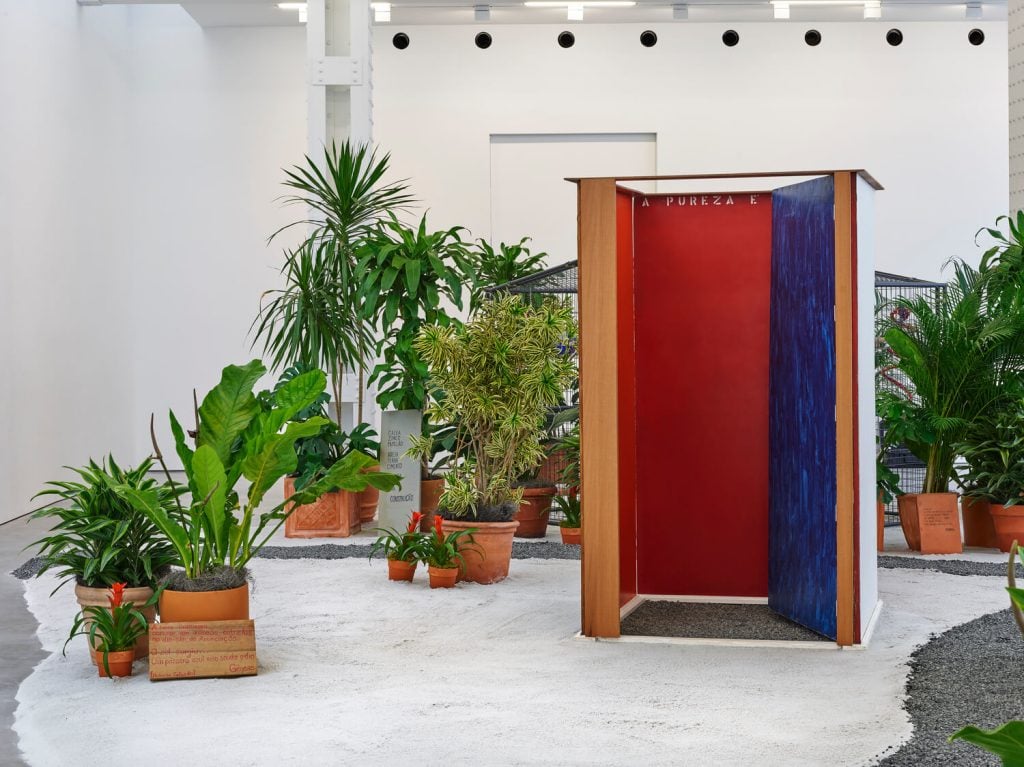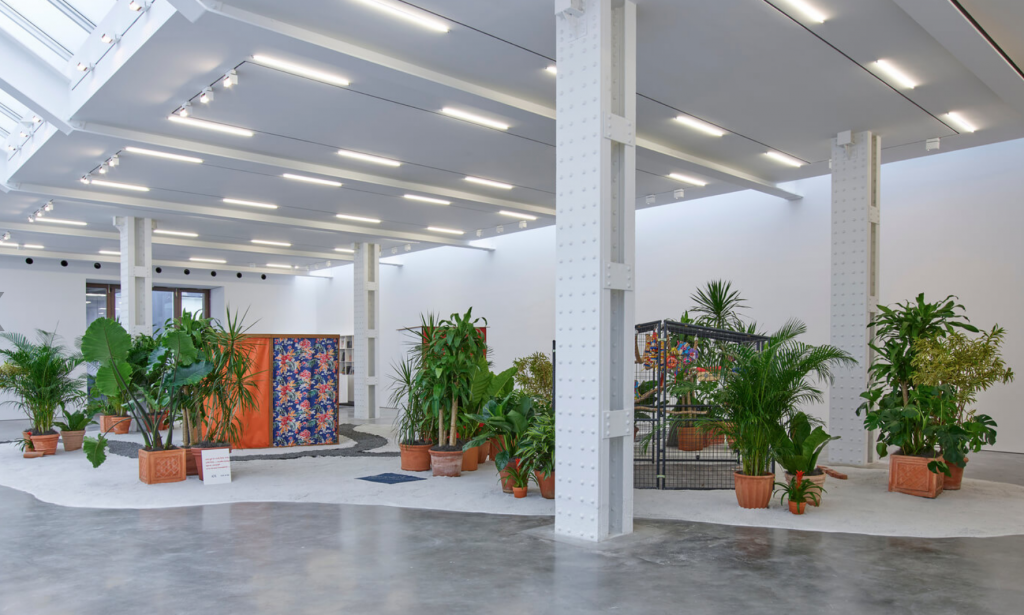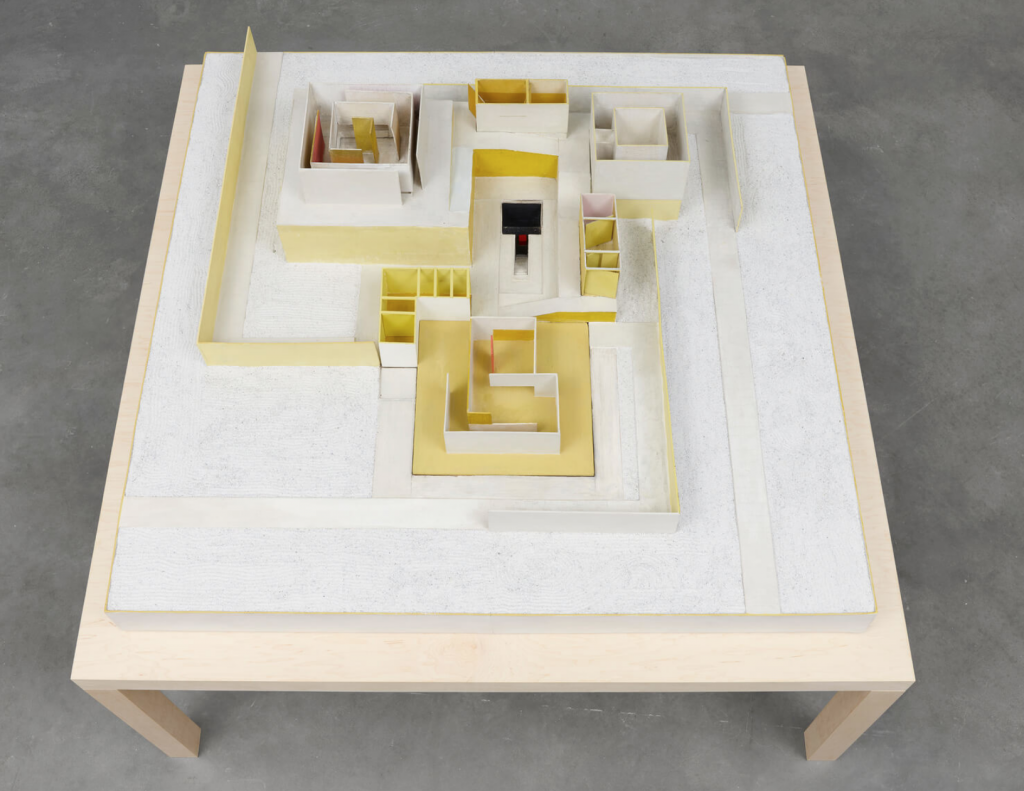Art World
Step Into the Sensory World of Hélio Oiticica’s ‘Tropicália’ at Lisson Gallery With This Video Narrated by the Late Brazilian Artist
"Helio Oiticica" is currently on view across Lisson Gallery's two New York spaces.

"Helio Oiticica" is currently on view across Lisson Gallery's two New York spaces.

Katie White

The godfather of the Brazilian mid-century avant-garde culture, Hélio Oiticica, in his brief lifetime (he died in 1980, in Rio, at the age of 42), metabolized disparate influences of theater, music, painting, and literature to create a unique and multidimensional form of environmental art that pushed the existing boundaries of color and structure.
Currently, both of Lisson Gallery’s New York gallery spaces are devoted to Oiticica’s works in a significant exhibition that taps into the cosmological ideas that guided the artist’s approach to art and life. It illustrates how profoundly his work shifted the wider art world toward the experiential art.
Tropicália, the artist’s most famous and arguably most influential installation, is on view at 504 West 24th Street. Conceived in late 1966 and created in 1967, Tropicália was Oiticica’s first architecturally scaled installation, and one of several that would portray, and critique, his native Brazil.

Installation view “Hélio Oiticica” 2020. Courtesy of Lisson Gallery. © Estate of Hélio Oiticica
Riffing on the idea of Brazil as a tropical paradise, Tropicália abounds with bright colors, flowers and plants, sand, stones, and even tropical birds caged in the installation’s maze-like exploratory. But Brazil’s complex realities are not glossed over either. Two penetrables, small wooden shed-like structures, mark the space, alluding to Brazilian favelas. Conflicting words and phrases fill space: “purity is a myth” (a pureza é um mito) is printed inside one penetrable, while on the grounds bricks, metal signs and cardboard carry handwritten poems by writer Roberta Salgado.
The experience of the work is one of discovery, and of constant reorientation.

Installation view “Hélio Oiticica” 2020. Courtesy of Lisson Gallery. © Estate of Hélio Oiticica
Another installation, this one at Lisson’s space at 508 West 24th Street, is more reflective of Oiticica’s process and development over the 1960s and ‘70s, featuring maquettes, gouaches, and other drawings. Notably on view is his 1961 Hunting Dogs Project (Projeto cães de caça), an important precedent for Oiticica.
Named after a spiral nebula discovered in the 17th century by a Polish astronomer, it was his first work that imagined intervention in a public space. The work consists of a maquette for an unrealized public garden including several penetrables that vaguely resemble an archeological site, a participant-controlled theater, and a set of stacked boxes which, when removed, unveil buried poems.
Shown alongside an early series of gouaches, these works show the genesis of how his early works on paper conceived of color and structure as inseparable and how these ideas began to take shape in the third dimension. Late in the 1970s, Oiticica’s interests would culminate with a series of works that combine the geometry of his early work with the visionary models for large-scale installations. Several of these models are also on view. One can’t help but wonder what else the artist would have had in store if it weren’t for his early death.
Watch this video below from the show, narrated by the late artist himself: